August is the peak month for summer fruits and vegetables, so now is the perfect time to hit up your local farmer’s market! And, if you have a garden at home, chances are it is close to its peak right now. This month’s guide will look very similar to July’s guide, with a few early fall items sneaking in, like apples. The theme this month is abundance when it comes to all your favorite fruits and veggies!

Welcome to my August Produce Guide! I apologize for not getting this out until almost the end of August. The last few weeks of summer flew by and the boys have now been back in school for a couple of weeks. I’m finally feeling more energized and ready to dive back into work, as well as enjoy the summer produce before it’s all gone!
I’m a little biased toward the month of August because it’s my birth month, but it’s a pretty great month! It is a month where some of the juiciest, tastiest and sweetest fruits and veggies are in season so I hope you are all getting a chance to enjoy them 🙂
P.S, keep in mind that different areas of the country have different growing seasons, so what is in season here may not be what is in season where you live.
Below I’ve highlighted a few of my favorite summer produce and I’ve linked to a few recipes that will give you ideas of how to enjoy them!
AUGUST PRODUCE GUIDE
ARUGULA
Arugula, or Rocket, belongs in the mustard family and is commonly used as a salad green. It has a nice, fresh peppery taste and a little can go along way in some recipes.
I prefer to use arugula raw, in salads or wraps, but it can be wilted down and served warm, similarly to spinach or kale. I didn’t really enjoy arugula for a long time, due to it’s slightly bitter, peppery taste, but recently I’ve grown to really enjoy it. It’s a salad green, but with more flavor than some others.

Arugula Tortellini Salad with Garlic Herb Dressing
Basil and Roasted Garlic Flatbread with Arugula
Tahini Balsamic Pasta Salad with Arugula
Balsamic Sweet Pepper and Boursin Sandwiches
Roasted Carrot and Chickpea Salad with Arugula
BEETS
Beets are root vegetables that come in a couple of different colors. Most people are familiar with red beets which have a very vibrant color, but there are also golden beets that are a little more mild in flavor. You can eat the beet greens as well!
Beets are high in phytonutrients, which are nutrients found in certain foods that can help keep your body healthy and prevent disease. They are also high in antioxidants, which have anti-inflammatory properties. Excess inflammation inside the body can lead to auto-immune issues and other diseases.
Beets can be enjoyed both raw and cooked. I like to add them raw to salads, like the one below. Beets can also be pickled, steamed or roasted. They have an earthy flavor that is slightly sweet.

Beet and Carrot Salad with Chickpeas
Goat Cheese Beet and Balsamic Puff Pastry Bites
Vegan Beet Burgers with Brown Rice
Roasted Beet Chickpea and Black Rice Bowls
Healthier Chocolate Cupcakes with Raspberry and Beets
BELL PEPPERS
Peppers are in the nightshade family and all types of peppers are in season now. Bell peppers are probably the kind that I cook with most often though. Green and red bell peppers are commonly used in recipes like pizza and fajitas, but they also come in yellow, orange and purple colors. Green bell peppers can be slightly bitter in flavor, but the rest of the colors are a little sweeter.
I use bell peppers in so many of my recipes! I chop them up and throw them into soups, salads, scrambled eggs, wraps and so much more. They are great raw with creamy ranch dip or hummus, or they can also be sautéed, roasted or cooked in soup.
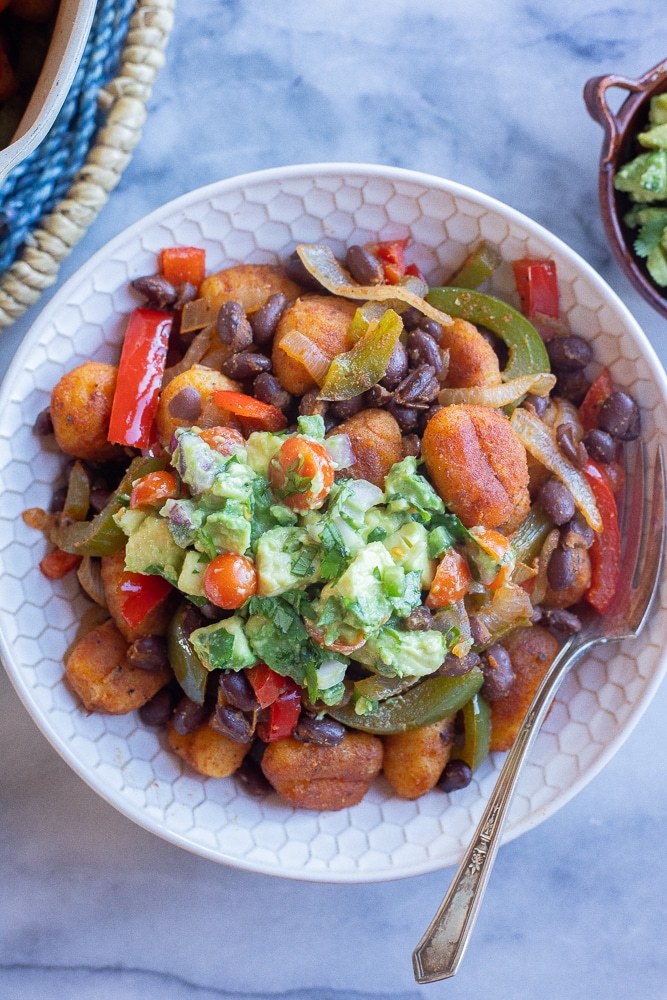
Vegetarian Stuffed Peppers with Cauliflower Rice
Fajita Gnocchi Skillet with Avocado Salsa
Loaded Breakfast Stuffed Peppers
Vegetarian Fajita Rice Casserole
Vegetarian Cheesy Tortellini Casserole
BROCCOLI
Broccoli is a cruciferous vegetable that is in the mustard family, along with cabbage, Brussels sprouts and kale. There are a few different varieties of broccoli, but Calabrese is the most common one in the United States and probably the one that most of us use.
Broccoli is a powerhouse vegetable that offers tons of health benefits. Broccoli is packed with tons of antioxidants, which help reduce unwanted inflammation inside the body. Broccoli also contains a large amount of both fiber and vitamin C. One cup of broccoli has about as much vitamin C as an orange.
Broccoli can be enjoyed both raw and cooked. I like chopping raw broccoli into bite sized pieces and adding it to salads. If you prefer your broccoli cooked, you can steam it, roast it or stir fry it.

Chili Garlic Broccoli with Chickpeas
Crunchy Broccoli Salad with Maple Mustard Dressing
Veggie Packed Broccoli Cheddar Soup
Crunchy Baked Broccoli with Spicy Soy Sauce
Cheesy Broccoli Rice Casserole Bites
CARROTS
Carrots are springtime root vegetables that are pretty easy to grow. Orange carrots are most comply seen and sold at the grocery store, but you can also grow rainbow colored carrots. Carrots come in different sizes, some are short and fat, while others are long and thin. Baby carrots, however, are not an actual carrot variety, instead they are made with a machine using regular sized carrots.
I love to snack on raw carrots or add them to salads and wrap. Carrots can also be roasted, sautéed, cooked into soup or baked into cakes or muffins. They are a very versatile vegetable that can be used in both sweet and savory recipes. Carrots are probably most eaten raw, with ranch or hummus, in the US though!
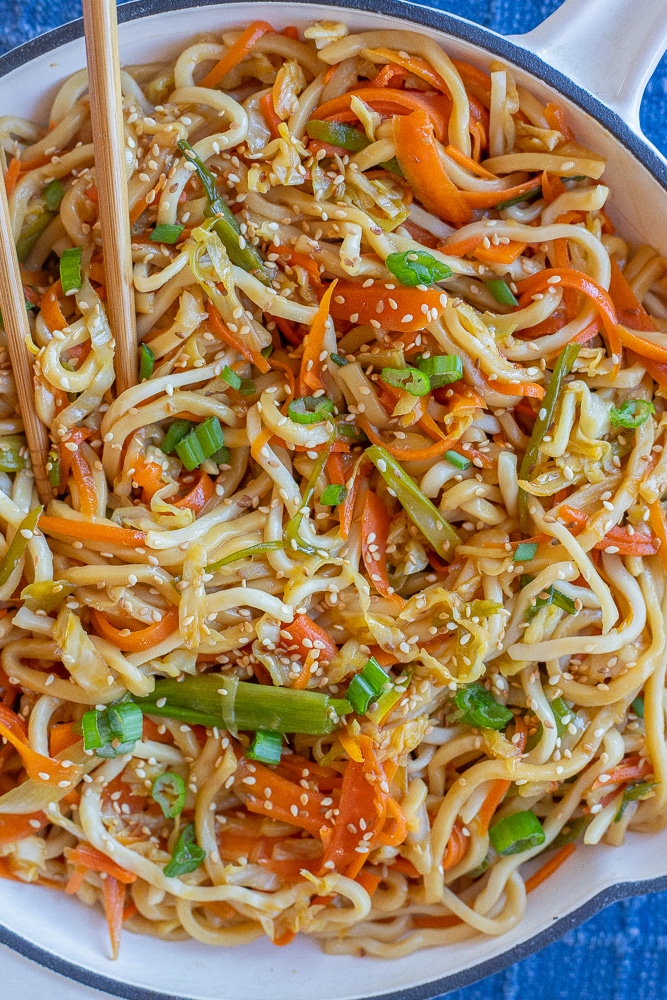
Carrot and Chickpea Salad with Orange Maple Dressing
Roasted Carrot and Dill Hummus
Noodles with Cabbage and Carrots
Curried Sweet Potato Carrot and Red Lentil Soup
CORN
Corn is in the grass family and is technically considered to be a fruit. Corn on the cob is super popular in the summertime and is such a great way to enjoy fresh corn! There are 17 different types of corn, but the most common type in the United States is called Dent, or field, corn. Sweet corn is also pretty common, especially if you’re buying canned corn.
I probably cook with canned corn more often than fresh corn, because it’s more convenient to store in the house. Corn is super versatile and can be added to so many different recipes, from corn salsa to cornbread. Corn can be served warm or cold and is great added to salads, soups, tacos and more!
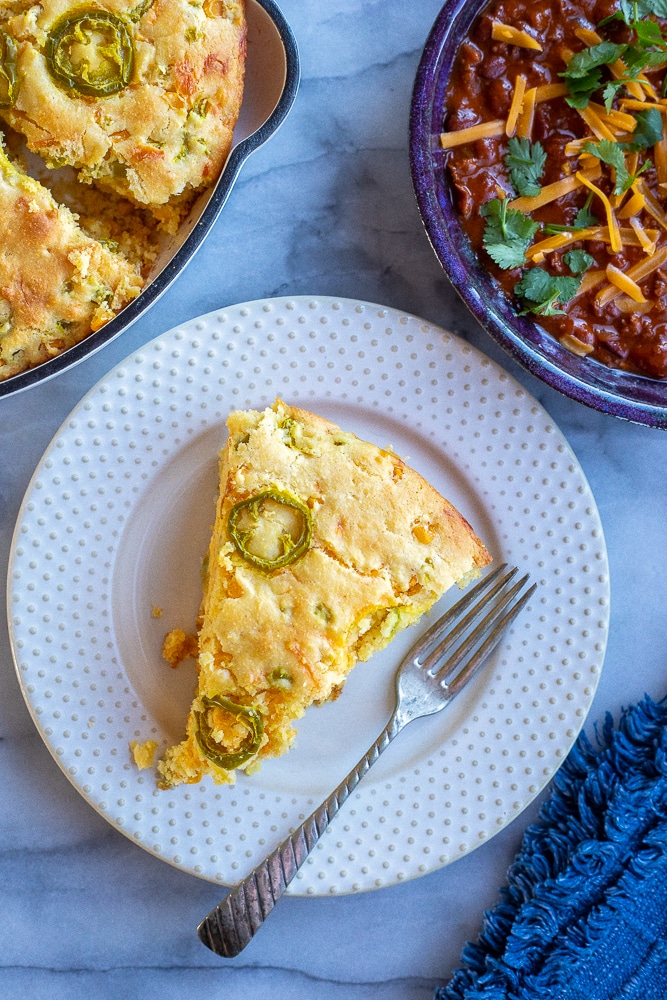
FRESH HERBS
Fresh herbs can be a mix of annuals and perennials. Herbs like Basil and cilantro need to be replanted each year, but sage, thyme, lavender and mint will all grow back, year after year. Fresh herbs are less potent than their dried counterparts and I use them all the time to add flavor and color to my recipes.
Fresh herbs are always great to have on hand to use as a colorful garnish for pastas, salads and soups or they can be used as more of a main ingredient. Pesto is one of my favorite things to make when I have extra fresh herbs on hand and can even be made with herbs besides basil, like mint or cilantro.
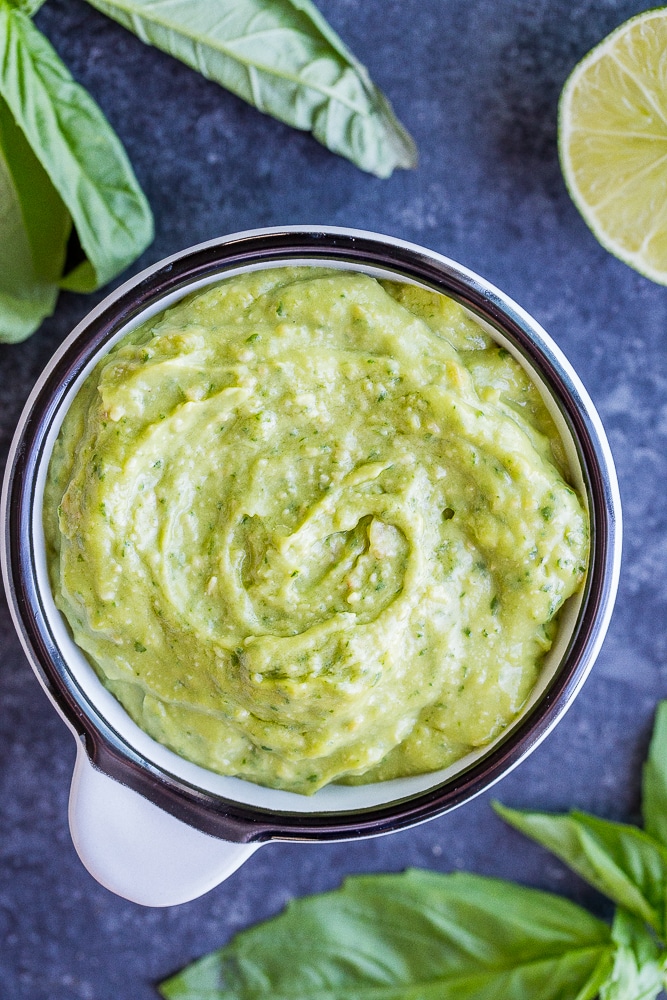
Herby Cucumber Salad with Feta and Chickpeas
Cilantro Lime Cucumber Salad with Avocado
GREEN BEANS
Green beans belong to the pea family, Fabaceae, and grow in over 500 different varieties. As the name states, green beans are most commonly green in color, however you can find some that are yellow or purple! Green beans are great mid-late summer crops that are usually either bushy or vine-like plants that like to grow up poles.
I love the taste of raw green beans, but I usually eat them cooked. Last year I grew them in the garden and enjoyed them fresh, but I also like to buy them frozen so I have them on hand all year long. Canned green beans are also commonly sold in grocery stores, but I don’t find them to be as great of quality as the frozen ones.

Three Bean Salad with Basil Vinaigrette
Egg Free Crispy Baked Green Bean Fries
KALE
Kale comes in a few different varieties including: curly, lacinato and purple. Kale is a hearty green that can withstand colder temperatures. Baby kale has also become quite popular these days and is still hearty, but a little more similar to baby spinach or lettuce.
Kale can be enjoyed both cooked and raw. I love massaging raw kale and adding it to salads. It’s hearty and has some texture, while also being refreshing. Kale wilts quickly, so it can easily be thrown into soups, stir fry and pastas.

Chopped Kale Power Salad with Lemon Tahini Dressing
Kale and White Bean Pasta with Parmesan
Garlicky Kale with White Beans and Lemon
PEAS
There are three types of spring peas; snow peas, sugar snap peas and garden peas. Snow peas are the flat looking peas that are used often in stir frys. Sugar snap peas are more rounded in shape and usually have larger, plump peas inside. Garden peas are what you are usually eating when you buy a bag of frozen sweet peas.
I love growing sugar snap peas in the garden to munch on raw, throughout the summer, and they are also great for adding fresh to salads. I always have a bag of frozen sweet peas around and enjoy throwing them into pastas or using them as a veggie side dish.
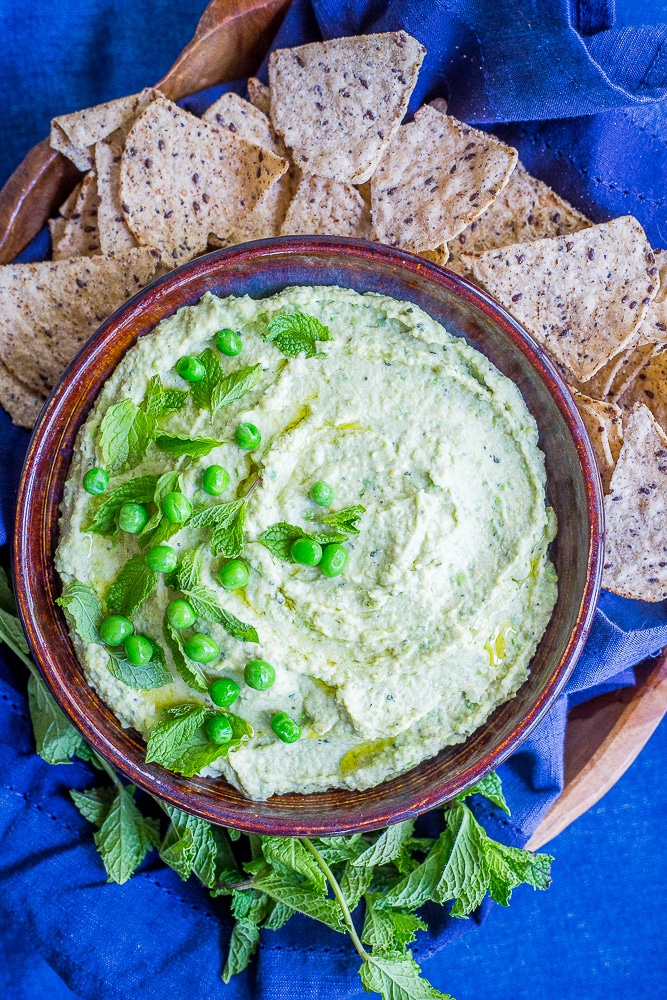
Lemony Broccoli and Sweet Pea Salad
Watercress Pesto Pasta with Peas
Roasted Vegetable Gnocchi Sausage Bake
RADISHES
Radishes are in the mustard family and come in a few different varieties. Most people are probably used to seeing Red Radishes, which are commonly sold in grocery stores. These radishes are usually eaten raw and have a spicy, crisp taste.
I usually just thinly slice radishes and throw them into salads, but you can also pickle them, grill them or even roast them in the oven. Roasting them mellows the sharp flavor a bit and adds some sweetness.

Roasted Radishes with Garlic and Herbs
Veggie Sushi Bowls with Quick Pickled Radishes
Crunchy Ranch Salad with Crispy Quinoa
Roasted Sweet Potato Black Bean Salad with Kale
TOMATOES
Tomatoes are in the nightshade family and come in many different varieties. They are considered a fruit, but they are often enjoyed like a vegetable. If you are on a diet that requires avoiding nightshades, unfortunately all tomatoes need to be avoided. Most varieties of tomatoes are sweet and juicy. Tomatoes come in many sizes, ranging from small cherry tomatoes to extra large beefsteak tomatoes.
Tomatoes are one of my favorite ingredients and they can be used in so many different ways. I love eating tomatoes raw, straight from the garden, or with salt and pepper. Uncooked tomatoes can be added to salads, sandwiches and appetizer trays. They can also be cooked and made into salsas, pasta sauces and ketchup. The possibilities are really endless, and don’t forget about sun-dried tomatoes!

Herby Parmesan Tomato Pasta Salad
Summer Squash and Tomato Pizza
Tomato Herb Butter Beans with Pesto Rice
ZUCCHINI
Zucchini is in the squash family and is usually a very prolific garden plant. Most people are probably familiar with the regular, long green zucchini that they sell at most grocery stores. That is the same zucchini that most people grown in their gardens. There are other types of zucchini though, including one that is yellow. Zucchini has a very mild flavor on it’s own and easily softens when cooking.
I prefer to use zucchinis that are on the smaller side. Extra large zucchini often have large seeds and a spongy middle inside. Both are fine to use though! Zucchini can be enjoyed raw, but I most often see it sautéed, roasted or mixed into baked goods like zucchini bread. To me, zucchini tastes best when it’s been cooked until it’s starting to caramelize and brown. This cooking method brings out such amazing flavors and is great for adding to stir fry, pasta, salad, tacos and more!


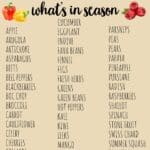
Leave a Reply